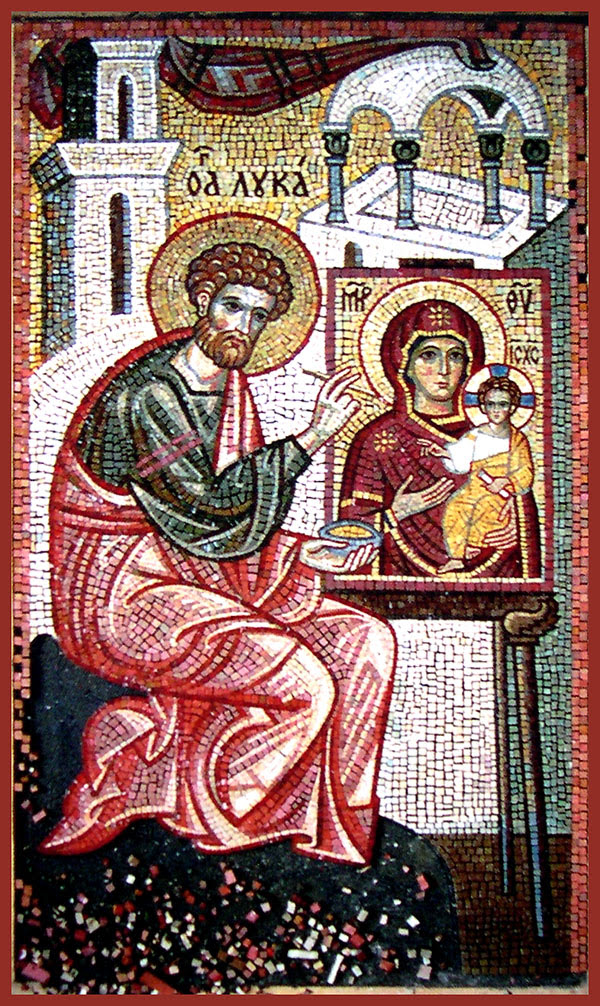
Dear Brothers and Sisters in Christ,
Tomorrow, November 30th is the Feast of St. Andrew the First Called Apostle. As his missionary journeys led him to a fishing town known as Byzantium, he laid the foundation for the epicenter of Eastern Christendom. He was the first bishop of that which would become Constantinople, the capital of the Roman Empire under Emperor Constantine, once he relocated the imperial city, and named it after himself. Therefore, St. Andrew is the patron saint of Constantinople and the Ecumenical Patriarchate, Itself.
Here in America, there is a distinguished group of Greek Orthodox Christians known as Archons; those who’s ministry it is to support, witness, educate about, and help sustain the Ecumenical Patriarchate in modern day Istanbul. Our Church does not enjoy the protections, the wealth, the comforts of the Vatican. Every day, His All-Holiness Ecumenical Bartholomew lives very precariously in nothing less than hostile surroundings. The support received through the Archons, both financially and in terms of awareness is invaluable to the existence of the Mother Church in a less than friendly, anti-Christian country.
Last Sunday was designated by our Archdiocese as “Archon Sunday,” an opportunity to bring awareness…to those who bring awareness.
As a parish, because of my accident side-lining me for a few weeks, we have fallen behind on a few of these special Sundays (look for a makeup “Church Musicians Sunday” and “Camp for the Future Sunday”). Since we celebrate St. Andrew tomorrow, it is most appropriate that we observe the work of the Archons on this day.
I wish to offer my sincere appreciation and respect to our parish’s lone Archon, Dr. Charles Beck, MD. Thank you, Charles, for your distinguished support of the Mother Church and Her mission in the world.
Since I cannot possibly articulate the value of this group and bring a proper perspective on the impact of Archon Sunday, please enjoy the following Encyclical from His Eminence Archbishop Elpidophoros of America that was to be read in church last Sunday.
Archiepiscopal Encyclical for Archon Sunday
Unto the Most Reverend and Right Reverend Hierarchs, Pious Priests and Deacons, Presvyteres and Diakonisses, the Monks and Nuns, Presidents and Members of Parish Councils, Honorable Archons of the Ecumenical Patriarchate, Members of Leadership 100, the Day and Afternoon Schools, Philoptochos Societies, the Youth, Greek Orthodox Organizations, and the entirety of the Christ-named Plenitude of the Sacred Archdiocese of America:
Andrew, the brother of Simon Peter, one of the two who had heard what John said, followed Jesus. First, he went and found his brother, the aforementioned Simon. (John 1:41-42) Beloved Brothers and Sisters in the Lord, Last year, the Holy Eparchial Synod of the Sacred Archdiocese of America inaugurated “Archon Sunday,” in order to recognize the esteemed Order of Saint Andrew the First Called Disciple, Archons of the Ecumenical Patriarchate, and to honor the Feast of their Heavenly Patron.
In the days preceding the Feast of Saint Andrew on Sunday, November 30th, His Holiness Pope Leo XIV will visit Nicaea (modern İznik), the site of the First Ecumenical Council, together with His All-Holiness Ecumenical Patriarch Bartholomew and Their Beatitudes of the Elder Patriarchates – the full complement of the ancient Pentarchy – in order to commemorate the 1700th Anniversary of the Three Hundred and Eighteen Fathers gathered in Nicaea and the Creed, and their declaration of the Faith of the Apostles, which we recite at every Divine Service.
Following the Nicaean event, the Pope will be present for the Feastday Liturgy of Saint Andrew in the Patriarchal Cathedral of Holy Great-Martyr George the Trophy Bearer, bearing witness to the enduring ecumenical progress that has been made over the last fifty years. There will be a special pilgrimage with many Archons for these most significant events, which signal real progress in the goal of a unified Christendom.
Throughout, we shall manifest the love of Andrew for his brother Simon, who went first out of love to share with his brother (renamed Peter by the Lord), the good news of finding the Messiah. Therefore, all parishes are urged to take time on this Sunday, November 23rd, to acknowledge the Archons of the Great Church of Christ, and to take full advantage of the many initiatives of the Order of Saint Andrew, which can be found on their website, https://archons.org. As children of the Mother Church of Constantinople, we all – Archon or no – have a responsibility to Her and Her spiritual mission, to share the Gospel of the Messiah, Who was found first by Saint Andrew, with all our brothers and sisters throughout the world.
With Blessings in our Lord Jesus Christ,
†ELPIDOPHOROS Archbishop of America
To all who celebrate their Name Day tomorrow, the Andrews and Andreas, Chronia Polla! Many Years!
With Much Love in Christ
Fr. Anthony Savas
Protopresbyter


